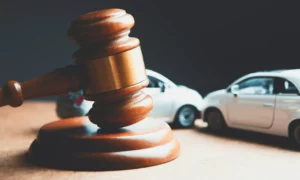Accidents happen, but that doesn’t mean you’re always to blame. You’re in the right place if you’ve recently been in a car accident and must prove you weren’t at fault. This guide will walk you through the steps to clear your name and ensure you’re not held responsible for an accident you didn’t cause. We’ll break down the process into manageable steps, using straightforward language and practical advice. By the end of this post, you’ll be well-equipped to navigate this challenging situation confidently.
- Gathering Evidence: The Foundation of Your Case
- Document the Scene: Your priority immediately after the accident should be safety. Once everyone is safe and medical help is coming, start gathering evidence. Take pictures of the accident scene from various angles, ensuring you capture the positions of the vehicles, any skid marks, road conditions, and traffic signs. Visual evidence is crucial because it provides an unbiased account of the scene.
- Police Report: When the police arrive, ensure they file a report. This official document is a vital piece of evidence when proving your not at fault after car accident. Be clear and concise when giving your statement to the officer, sticking to the facts. Please request a copy of the report as soon as it’s available. This report will be a cornerstone of your defense, providing an authoritative account of the accident.
- Communicating with Insurance Companies
- Reporting the Accident: Inform your insurance company about the accident right away. Please provide them with all the evidence you’ve gathered, including photos, witness information, and the police report. Be honest and detailed in your account, but avoid admitting fault or making speculative statements. Insurance companies will scrutinize every detail, so clarity and accuracy are essential.
- Dealing with the Other Party’s Insurer: You may also need to communicate with the other driver’s insurance company. Again, provide factual information and avoid making admissions of guilt. If the other insurer contacts you, referring them to your insurance company is often best. This prevents you from inadvertently saying something that could be used against you.
- Repair Estimates and Medical Records
- Get Repair Estimates: Get repair estimates from reputable auto repair shops after the accident. These estimates will help establish the financial impact of the accident and support your claim. Ensure the estimates are detailed and itemized, covering all damage caused by the collision.
- Documenting Injuries: If you sustained injuries, keep thorough records of all medical treatments, diagnoses, and expenses. Medical records not only prove the extent of your injuries but also show the timeline of treatments, linking them directly to the accident. Maintain a journal of your recovery process, noting how the injuries affect your daily life. This personal account can be a powerful tool when negotiating with insurance companies or in court.
- Navigating the Legal Landscape
- Consult an Attorney: If you’re facing significant opposition from the other party or their insurer, consider consulting a personal injury attorney. An attorney can provide expert advice, negotiate with insurance companies, and represent you in court if necessary. They can also help you understand your rights and the legal processes, ensuring you take all critical steps.
- Understand Comparative Negligence: The fault isn’t always black and white in some states. Understanding comparative negligence laws in your state can help you build a stronger case. These laws determine how fault is shared among parties involved in an accident. Even if you bear some responsibility, you may still recover a portion of the damages. An attorney can explain how these laws apply to your situation and strategize accordingly.
- Presenting Your Case: Bringing it All Together.
- Organize Your Evidence: Once you’ve gathered all the necessary evidence, organize it systematically. Create a chronological timeline of events supported by your photos, witness statements, and the police report. This organization will make it easier to present your case clearly and convincingly.
- Prepare for Potential Outcomes: Prepare yourself for various outcomes. Sometimes, despite your best efforts, the other party’s insurance company may only partially agree with your version of events. Be ready to negotiate and, if needed, present your case in small claims court. Practice delivering your evidence logically and confidently, emphasizing the key points that prove you were not at fault.
Conclusion:
Proving you’re not at fault after a car accident can be daunting, but you can navigate this challenge successfully with the right approach. You can build a strong defense by gathering solid evidence, communicating effectively with insurance companies, documenting all relevant details, understanding the legal landscape, and presenting your case systematically. Remember, preparation and organization are your best allies in proving your innocence.
Read More From Techbullion And Businesnewswire.com



































